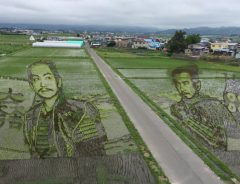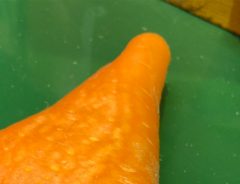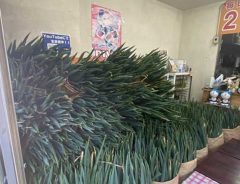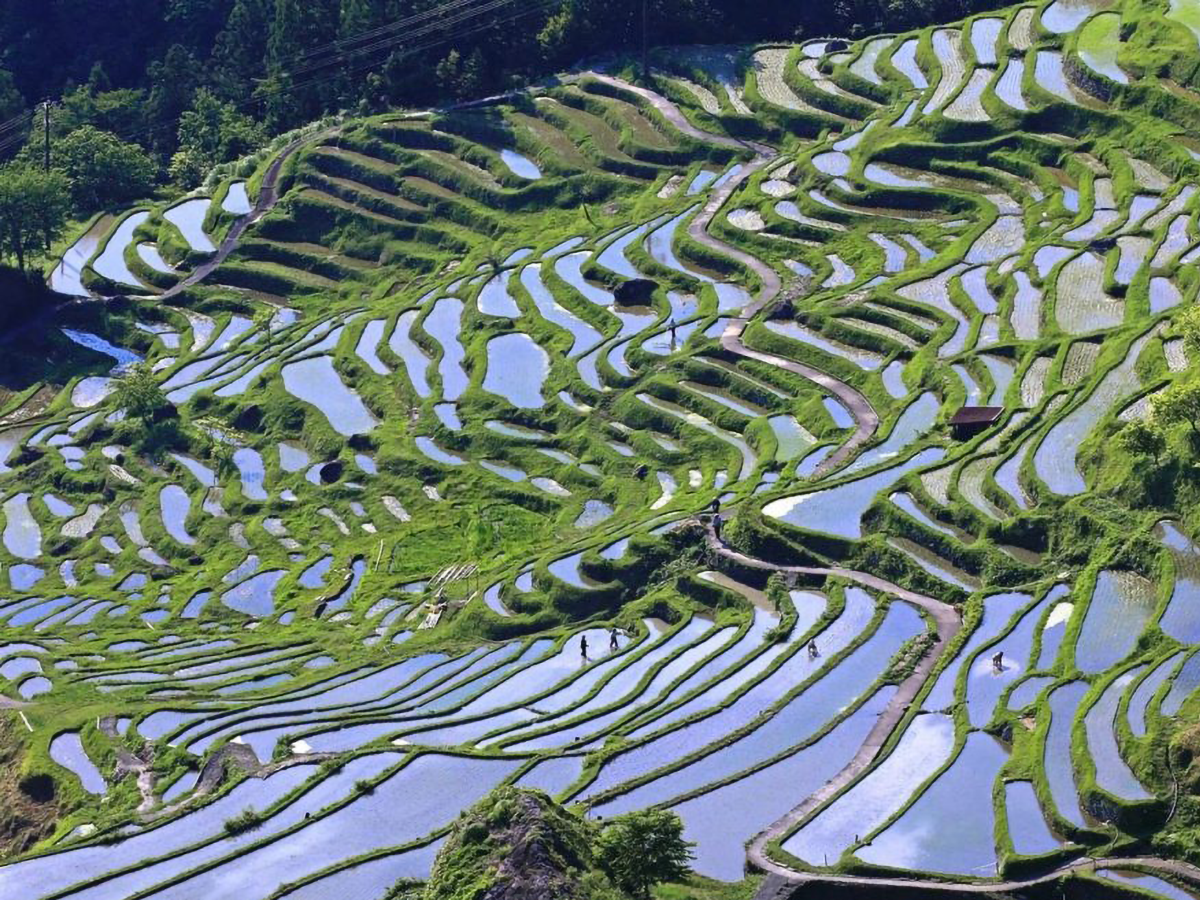- Tags:
- Farming / Mie / Rice Paddy Art
Related Article
-

2016 Rice Paddy Art Displays Massive Works Of Godzilla And Samurai Warriors
-

Japanese farmer’s “ugly duckling” tomatoes become adorable hit thanks to Twitter attention
-

Japanese chain helps fight food waste and turns home tables into at-home izakayas
-

“I haven’t seen something like this in 10 years of farming!” Mutant crepe carrot befuddles netizens
-

Top 30 Travel Destinations In Japan Chosen By International Travelers
-

Bento store in Tokyo’s generous 1,000 kilo free food giveaway turns it into an onion forest



The sound of pheasants chirping and frogs croaking filled the air. The rice paddies reflected the blue sky, and the ridges between them created a net-like pattern.
Watching the farmers planting rice in perfectly straight lines, I realized just how small their figures look against the rice paddies. I stared in awe at the beautiful scene in front of me.
Sankei Shimbun
These are the Maruyama senmaida — thousand rice paddies — located southwest of Kumano City in Mie Prefecture. There are a total of 1,340 rice paddies lined up side by side, 150 meters above sea level. The site has been named by the Ministry of Agriculture as one of Japan’s “100 Best Rice Terraces.”
It is not known exactly when these paddies were first created, but it is thought there were 2,240 of them in 1601 (6th year of the Keichō era). The number decreased to around 500 at the start of the Heisei era, just over 30 years ago.
Sankei Shimbun
Thanks to the efforts of local residents who set up a preservation group, many damaged paddies were repaired and reconstructed, increasing the number to 800. Now, each farmer is in charge of maintaining his or her own section under a private ownership system.
Individual paddies in the terrace may be small in size, but since everything from rice planting to harvesting is done by hand, each one requires a painstaking amount of effort. It is the dedication and hard work of each farmer that has made the existence of this breathtaking scenery possible.
Sankei Shimbun
Splish, splash. Toshio Kita, 70, president of the preservation group, is busy planting rice with his wife, Keiko, 68. A quiet splash sounds each time they step into the water. Behind them is a long, neat line of rice shoots they have just planted, as straight as wheel tracks on the surface of the water.
Written by Japan ForwardThe continuation of this article can be read on the "Japan Forward" site.
[Hidden Wonders of Japan] Preserving Maruyama’s Thousand Rice Paddies